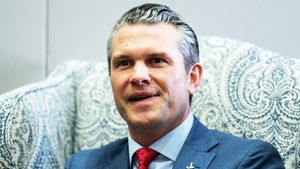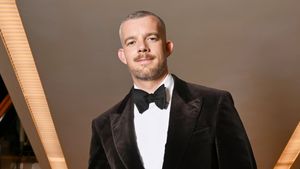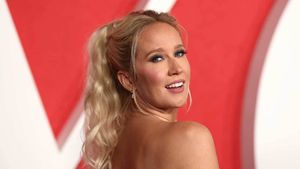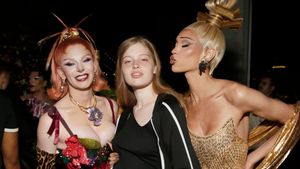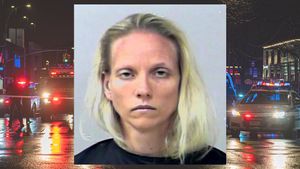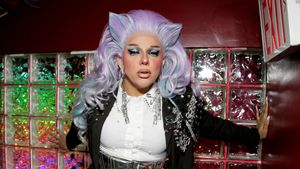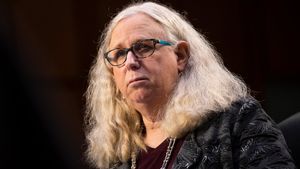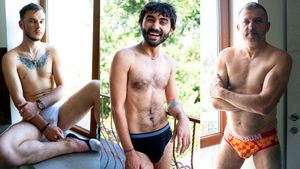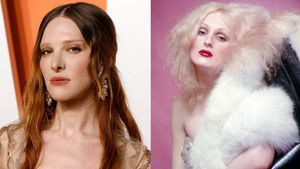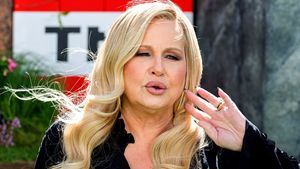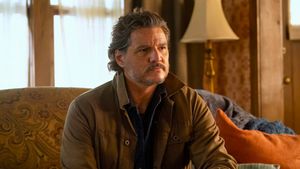The history of horror is queer. Literally; a queer woman invented the genre. Her name is Mary Shelley, author of Frankenstein, and her story about a scientist playing god, cheating death, and creating monstrous life sprung both out of her own fertility issues and the queerness of being an “other”. Horror history is our history, and the new Shudder docuseries Queer for Fear, from director/producer Bryan Fuller, lays that bare.
Shelley was just the beginning; she was followed by the likes of Oscar Wilde (The Portrait of Dorian Gray), Bram Stoker (Dracula), and James Whale (The Bride of Frankenstein). From those early books and films, to the work of Fuller himself on Hannibal— although he’s too humble to admit it — there’s a clear thread that extends across the decades, mirroring and celebrating queer anxieties of both the internal and the external variety. And perhaps more importantly, it’s rife with survival stories.
But how do you begin to tell a story as broad and complex as the history of queer horror? It’s not easy, admits Fuller. Queer for Fear sprung from an earlier project, Horror Noire, on which Fangoria editor Phil Nobile Jr. also served as executive producer. As with that feature-length film, the goal was to document the contributions of another marginalized group, in this case, the LGBTQ+ community, to the horror genre.
 Courtesy of Universal
Courtesy of Universal
It quickly became clear that there was no way to even begin to do the subject justice as a feature film. “Like Horror Noire, [Queer for Fear] was supposed to be a 90-minute movie, so they did a version of that,” Fuller explains to PRIDE. “[But] it felt like there was just so much material to cover, and that it’s like roller skating through the Louvre.”Fuller went back to the network and asked for six hours, but they settled on four hour-long episodes.
“There’s too much media to cover,” producer Steak House tells PRIDE. “There’s so many different people to talk with about [the topic], different reactions and thoughts that, honestly, could be a 10-part series.”
It was important to both Fuller and House that the series tell stories that resonate, and that meant slowing things down. “Even with four hours, it’s still not enough time to tell an emotional story about people’s lives and certain thematics that resonate for queer audiences in horror films,” the former says.
Queer for Fear: The History of Queer Horror - Official Trailer (2022)www.youtube.com
While Perkins’ interview is especially poignant, he’s just one of many incredible voices present in the series. And that diversity of voices didn’t happen by accident. “When I came in, I really was like, OK, we’re not talking to enough women, we’re not talking enough to enough butch dykes. So we needed to expand that a little,” House recalls. “I think that this process has been so interesting because I really wanted to also talk to a very diverse group of people. That was also very important to us, because so much of the content is made by white dudes, because that’s who got to make stuff at that time. So we wanted different identities, different genders, different ethnicities, just everything possible.”
Thanks to that broad scope, even dedicated horror buffs will be surprised by what they learn in addition to how influential queerness has been to the genre. This includes both Fuller and House, who were shocked by what they discovered in the process of making Queer for Fear.
 Courtesy of Universal
Courtesy of Universal
“I had no idea that Bram Stoker was queer,” admits Fuller. “I remember explicitly, in seventh grade after reading Dracula, sort of picking up on things and [there was] a certain level of horniness with the dynamics in Dracula, that I was like, what’s this about?” he shares. “I looked up Bram Stoker and he was married with kids, so I was like ‘oh, nevermind.’ But then thanks to David Skal, who’s a Dracula historian, he unearthed these letters and a whole history that’s below the surface. It really kind of changes the perception of Dracula as about queer oppression, about self-suppression, about the fear of lust, about the fear of sexuality. It’s kind of like puritanical horror written by a deeply, deeply closeted, queer man. And that changes everything with how we look at Dracula and what [it] actually means.”
The series’ creators are excited for viewers to have similar moments of epiphany while watching — and to feel a sense of community. “Growing up queer, we’re seen as outsiders, we’re seeing we don’t fit in, we’re even maybe told we’re bad. Told we’re evil. We’re going to hell, we’re going to, you know, the worst thing possible. You’re worse than a rapist. What are you talking about? Crazy,” House says. “But I think that’s why we relate to horror so much. We feel like the monster, and we see ourselves as the monster, and we see ourselves on the screen. And we also see ourselves as a survivor. You see these stories [and think] they survived, I can survive. This is so cool.”
 Courtesy of New Line Cinema
Courtesy of New Line Cinema
“I want every queer person who doesn’t have a community or a friend, or [doesn’t] know that someone loves them, to know that we’re out here, and we’re here for you,” House implores. “Find us. You’re not alone. That’s what I want more than anything: for people to feel the acceptance and love they deserve.”
That starts with seeing how queer individuals are and always were represented in the genre, even if it was coded. “There’s something about queer people taking ownership over a genre that is often — at least in pop culture — sort of ‘horror bro’-ed to exclusion in a fashion that I think we’ve frequently seen ourselves, either as victims or poorly represented characters in the horror genre,” Fuller observes. Queer for Fear changes that dynamic by being an illuminating jaunt through the history of horror while simultaneously reclaiming a genre that was always ours to begin with.
Queer For Fear premieres September 30 on Shudder. Watch PRIDE's full interviews with Bryan Fuller and Steak House below.
The Producers of 'Queer For Fear'www.youtube.com
RELATED | Watch the Dragula Titans 'Meet the Monsters' Cast Interviews









































 Courtesy of Universal
Courtesy of Universal Courtesy of Universal
Courtesy of Universal Courtesy of New Line Cinema
Courtesy of New Line Cinema











































